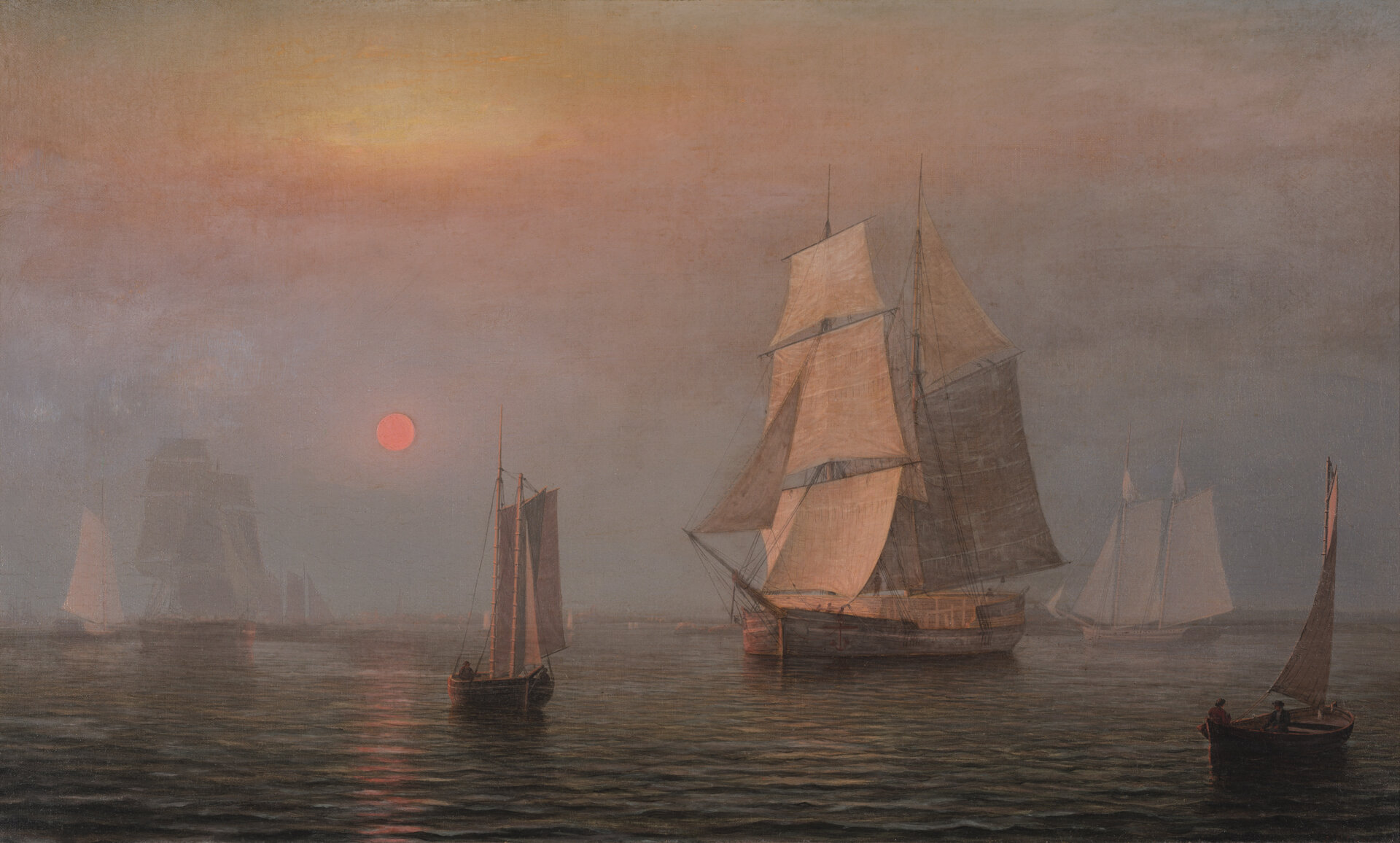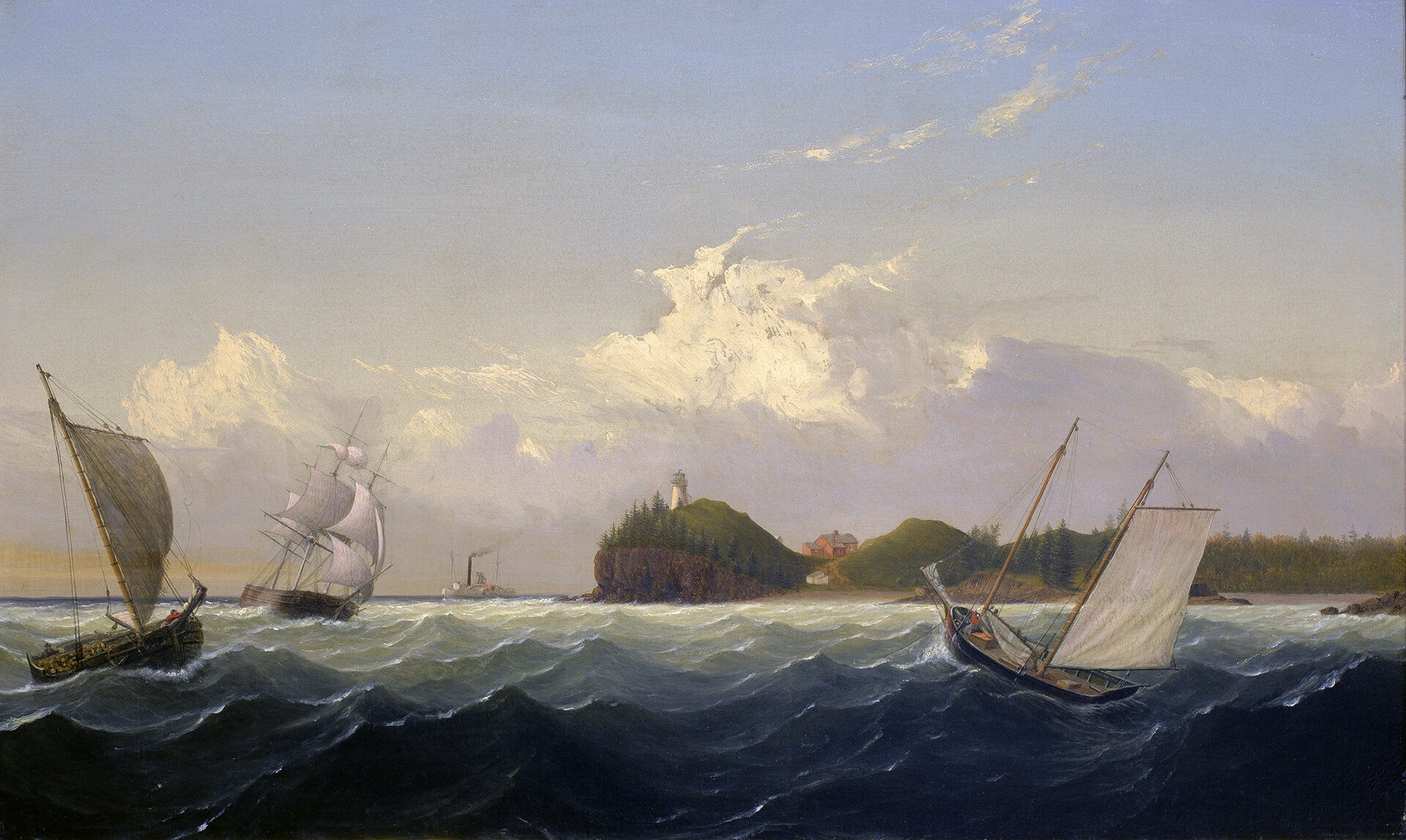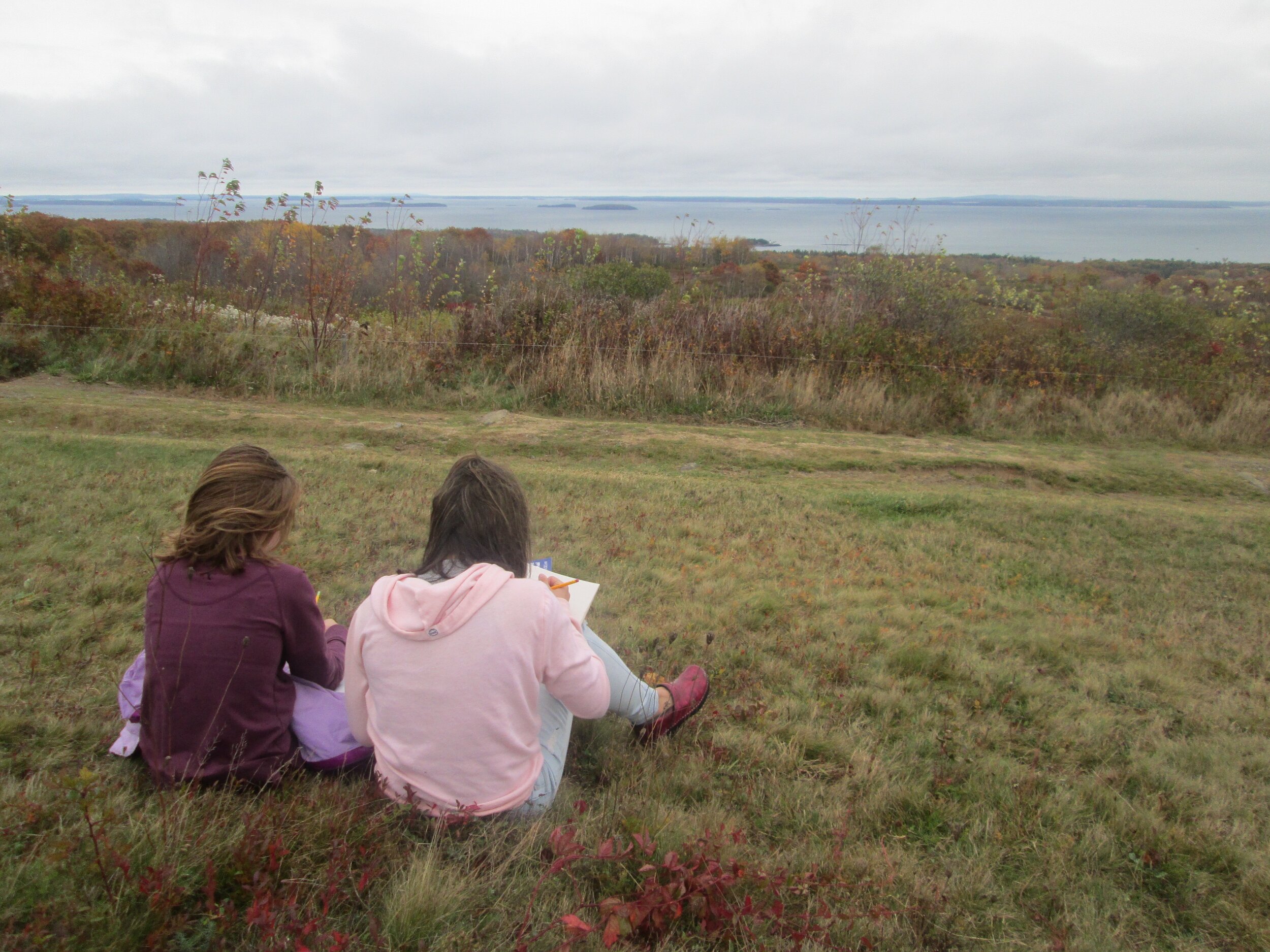GRADES K-6
Community Stories Unit: Puppet-making
Community Stories Unit: Puppet-making
Learn and share stories of your community through puppets! Conduct research and interviews to develop a historical account and share oral history through performance-based productions. Seek untold stories to shine a light on, use your imagination to create a historical fiction based on your research, and/or tell a modern story of your own experiences. Practice your performance and share it with others live or on film. Consider how you may alter the telling of your story based on your audience. For example, you may wish to perform your stories for younger students. How might you change the dialogue? Create a set to enhance your story!
This unit is inspired by the work of students, educators, museum educators, and teaching artists in the Stories of the Land and Its People program.
Curricular Connections:
History
Creative Writing
Historical Fiction
Documentation
Elements of Storytelling: Plot, Setting + Characters
Elements of Storytelling: Beginning, Middle + End
Mood / Tone
Vocabulary:
Composition
Subject
Foreground / Middle-ground / Background
Mood / Tone
Landscape / Seascape
Vantage Point
Color
Line + Form
Farnsworth Collection:
Notice: Notice works of art in the Farnsworth collection. How are people and places represented? What elements might you draw on for your puppets and set-design?
Activity: Expedition + Inquiry
Expedition: Explore and notice places in your community. Observe the buildings, land formations, and people! Document what you see by sketching or by taking pictures with a camera. Remember to practice courteous photography etiquette, and ask before taking a person’s picture.
Curricular Connections: Take a moment for sensory writing. What do you see, smell, feel, taste, and hear? Use detailed language to describe what you notice. Consider how this may change with each season.
Community Stories: Puppet show
Curricular Connections: Research local history to learn about people and places in your community. Consider what stories are told and what stories or perspectives are not represented.
Reflect + Create: Based on your research, create a script to share a history set in your town. You may wish to create a historical fiction, a biography of an important person or people, or develop a historical documentary.
William Zorach, The Wisdom of Solomon, 1963-66, 1992.1
Create: Create puppets to perform your story. Notice other 3-dimensional objects like this sculpture by William Zorach. How does the artist use form and shape in constructing their work of art? How can you use found objects like artist Louise Nevelson to create your puppets?
Create: Consider voice and movement. You may want to practice conveying a feeling through movement by engaging with videos from the Art + Movement Unit. How can you “show” your story? What backdrops do you require?
Reflect: Consider issues of representation as you develop your puppets and stories. Who are your characters, and how are you choosing to depict them?
Stories students work with teaching artist Matt Curtis to block their puppet performances and prepare their props.
Reflect + Revise: Practice your performance! Give each other feedback and coordinate how you will move throughout each scene.
Exhibition: Share your story with a live performance or document it on video! Create a book to accompany your project.
Gallery of student work:
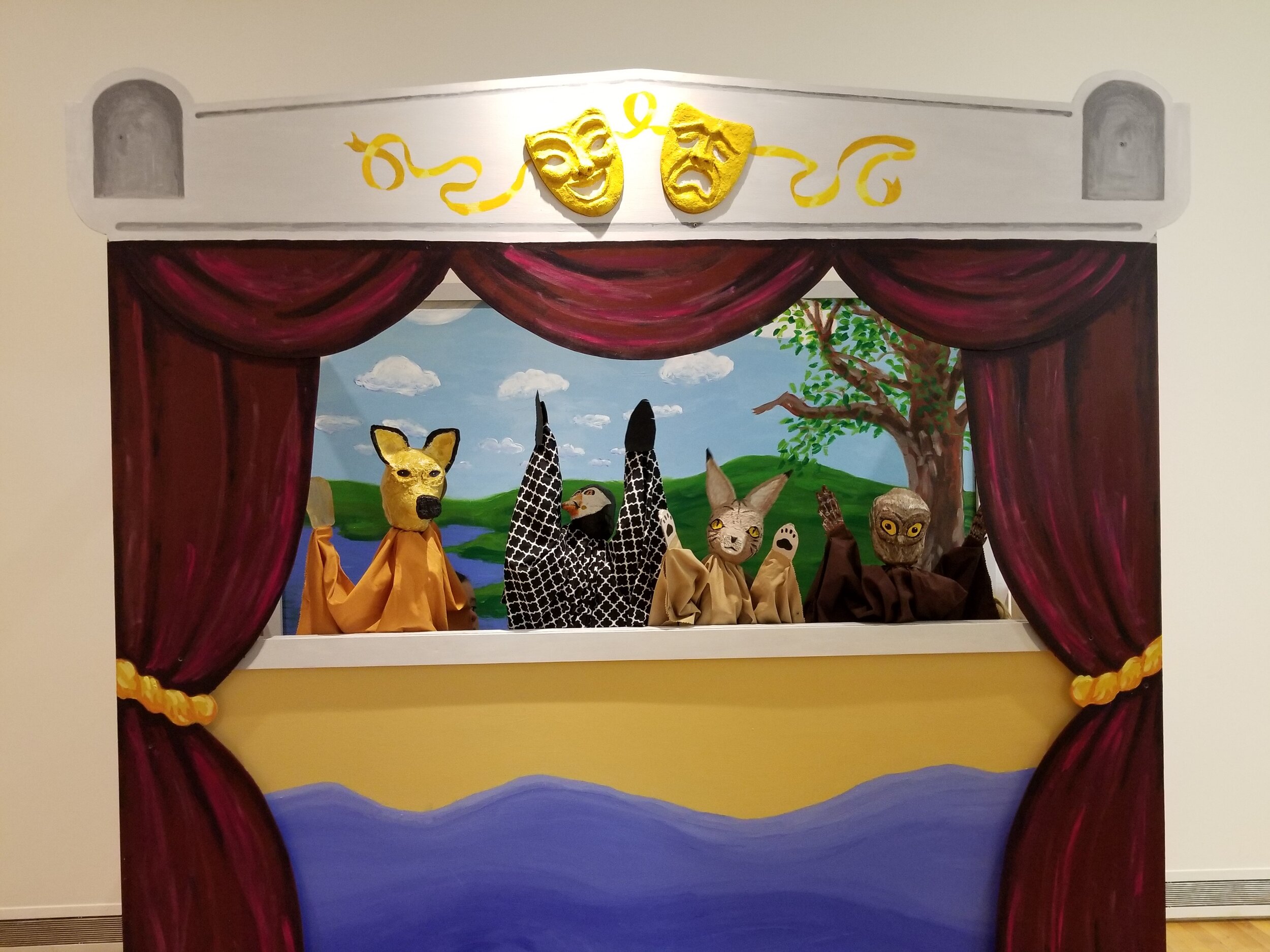
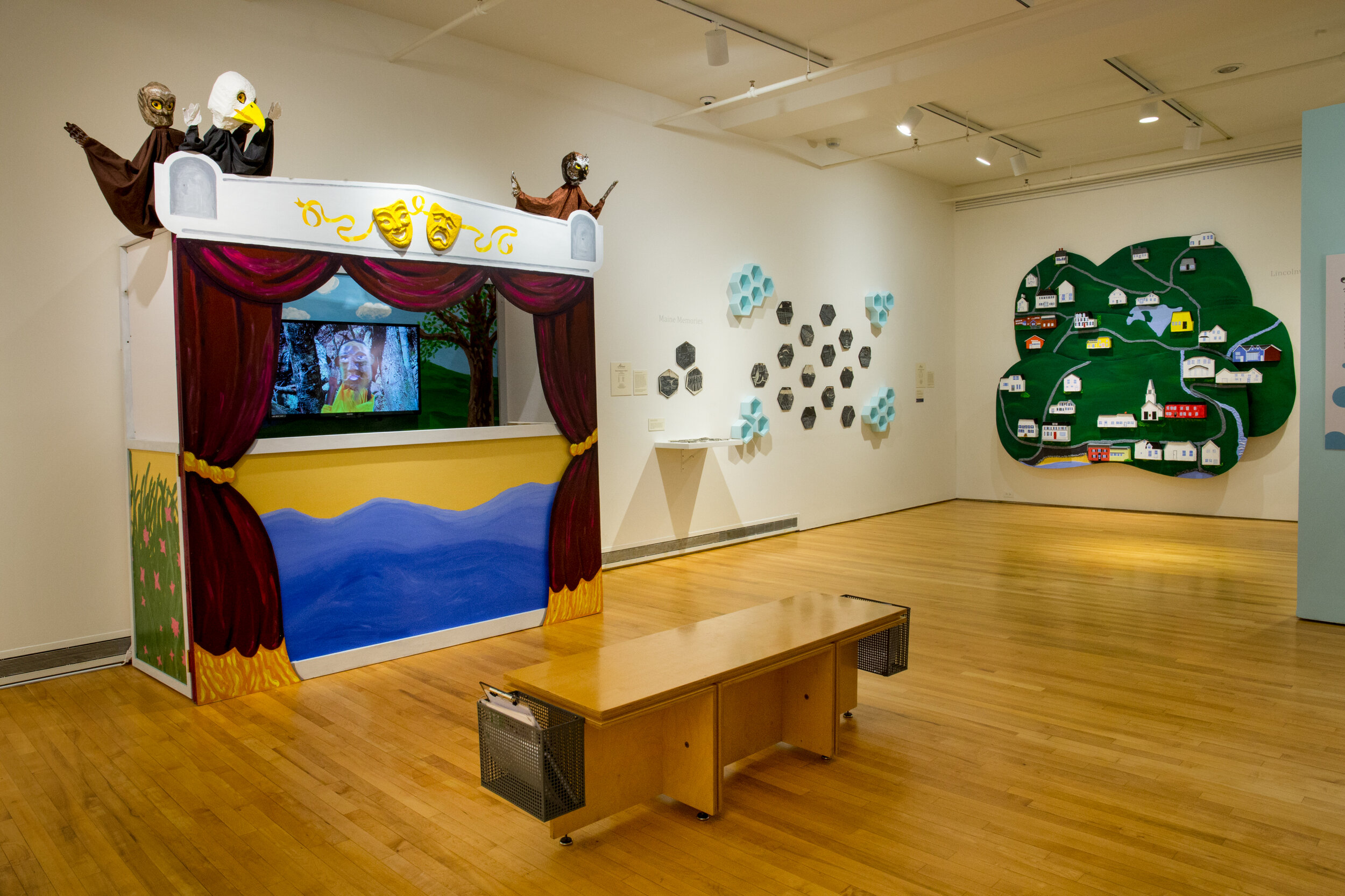

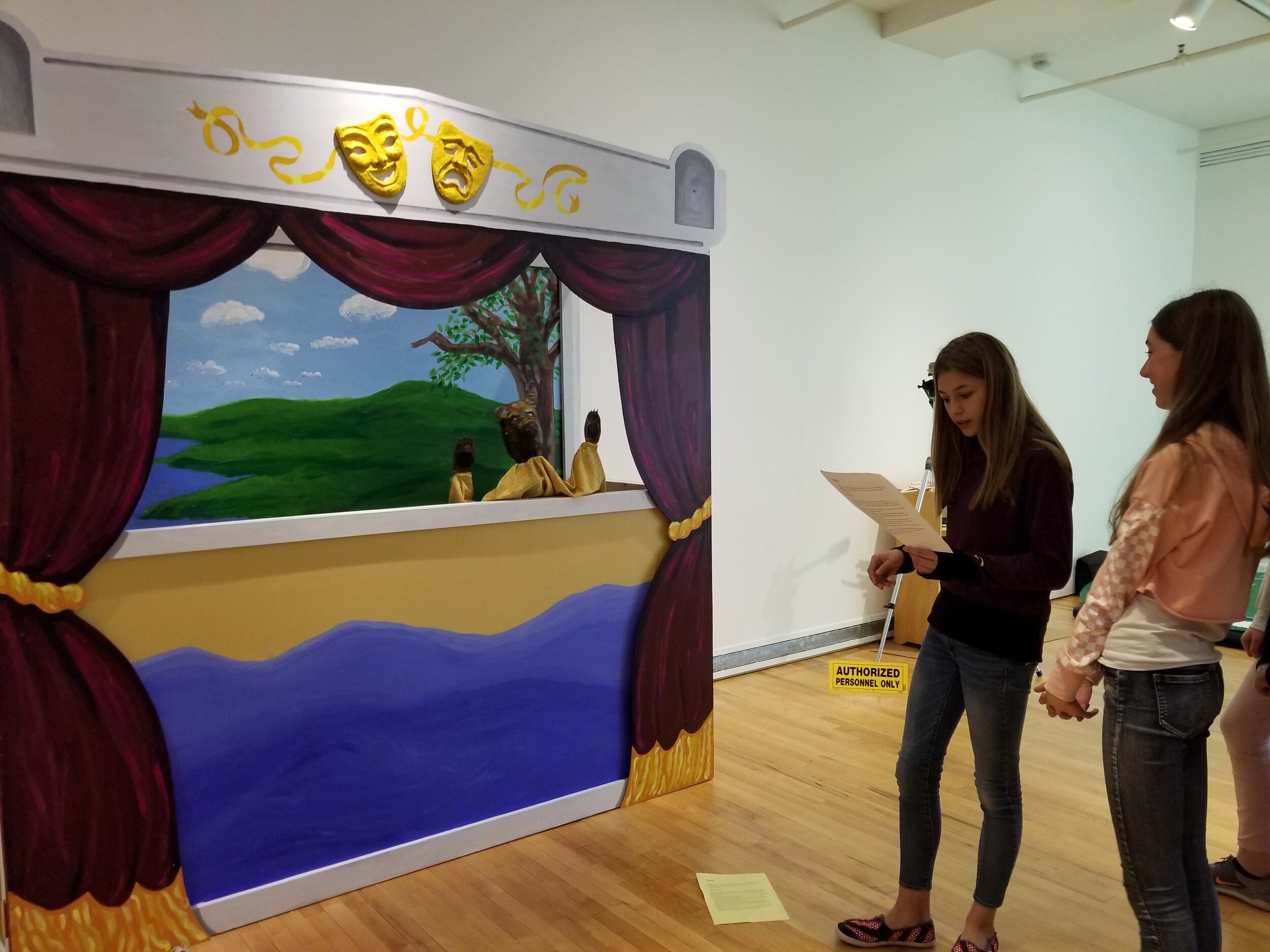

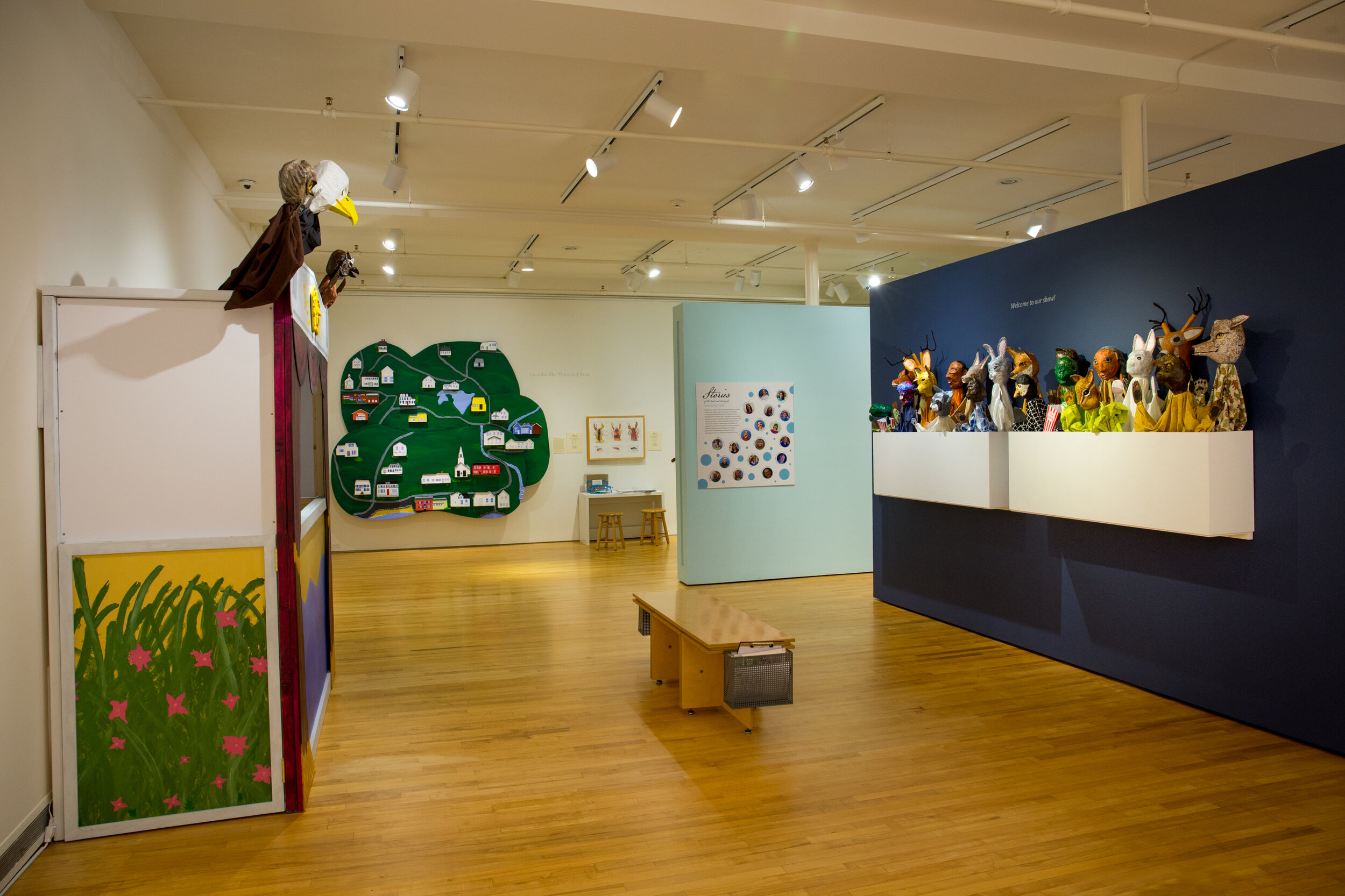
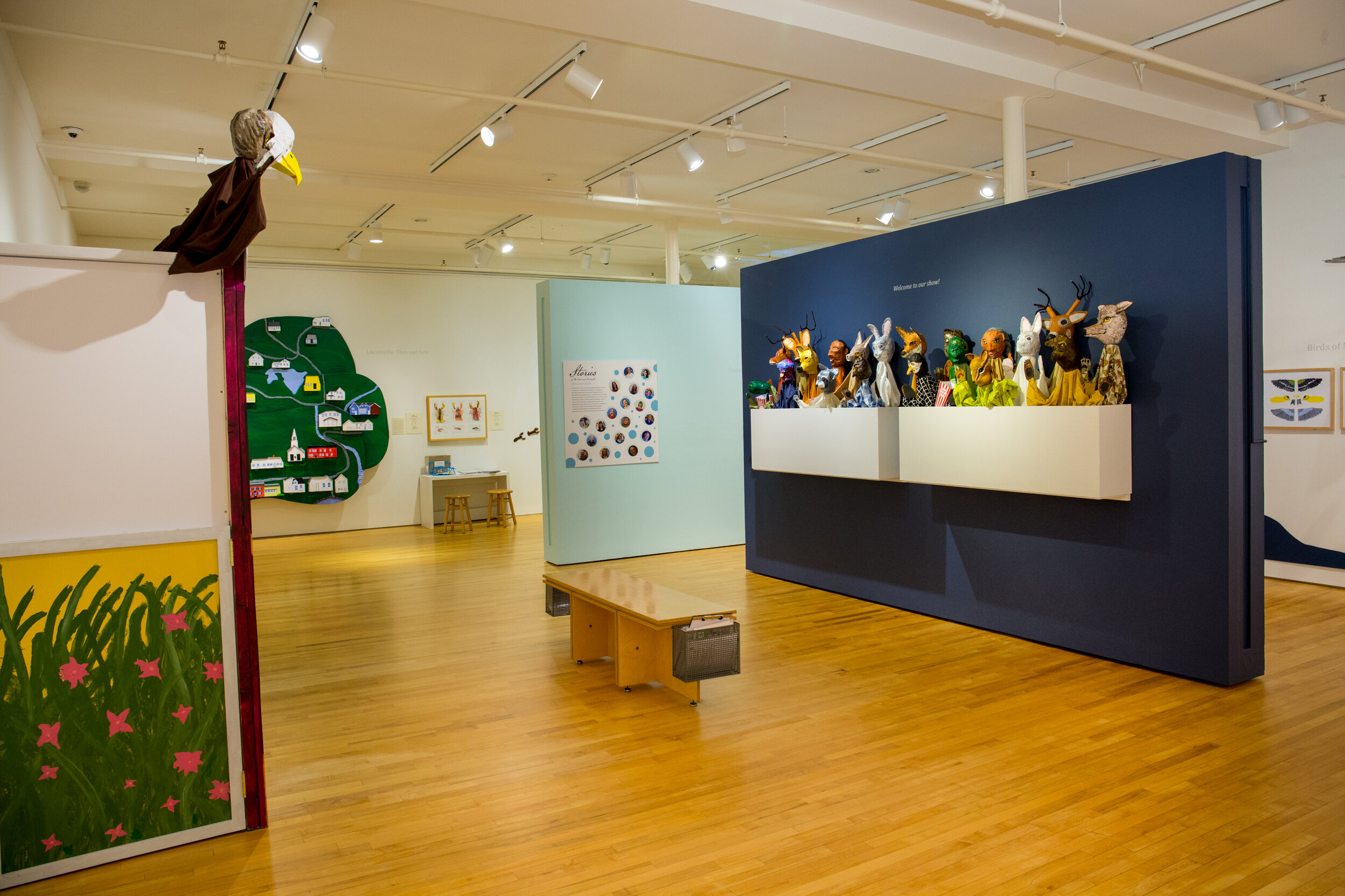

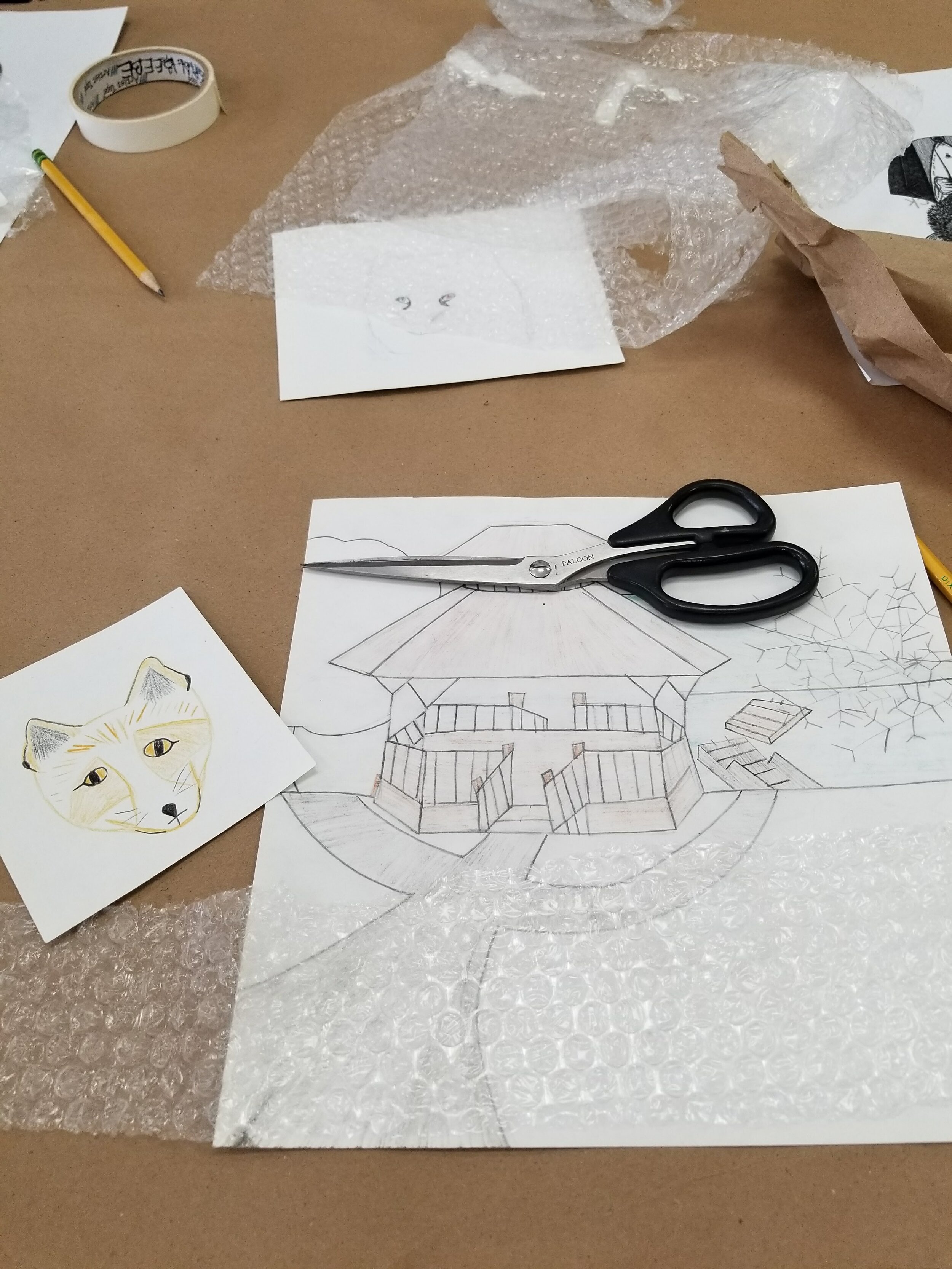
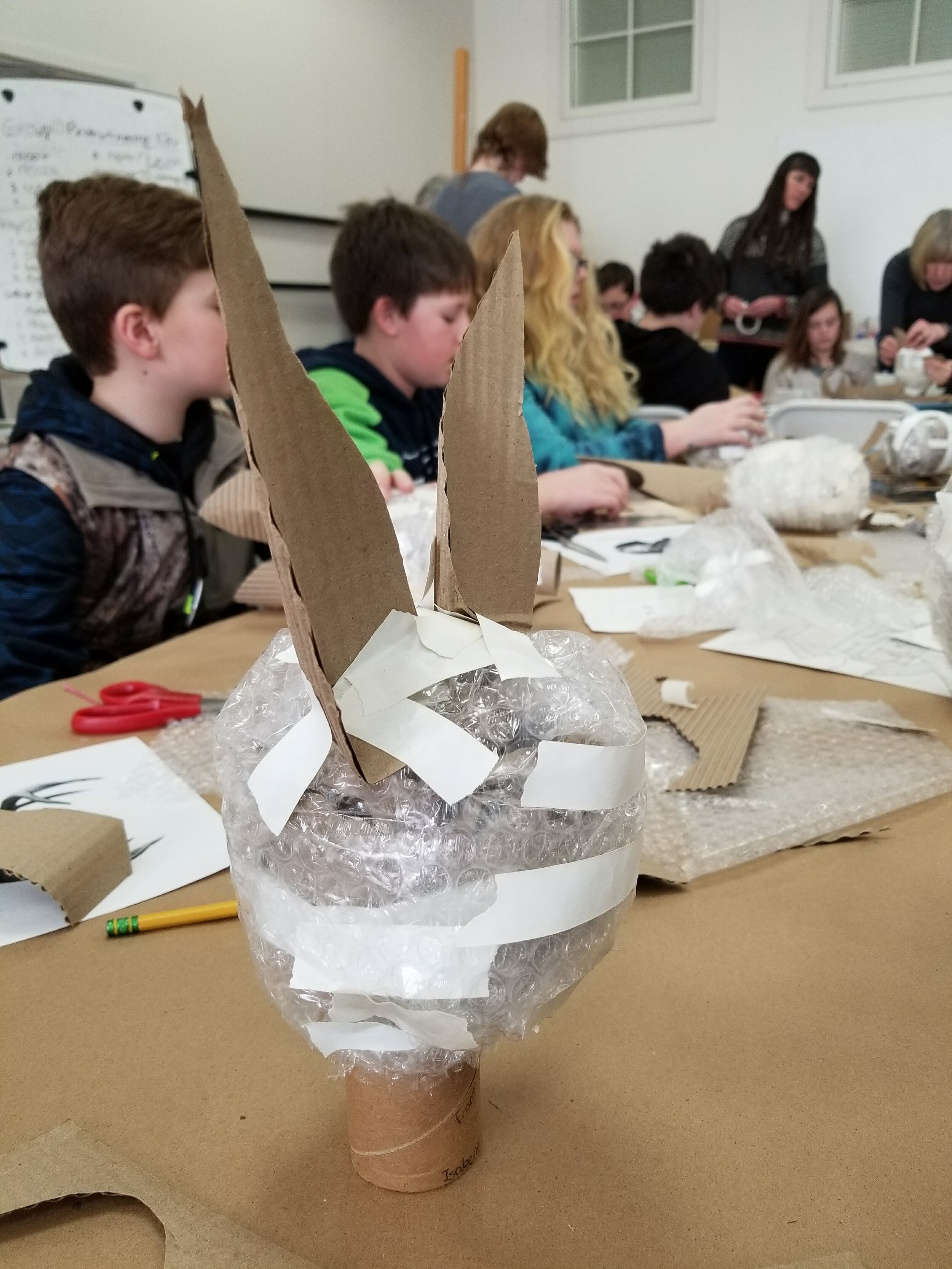
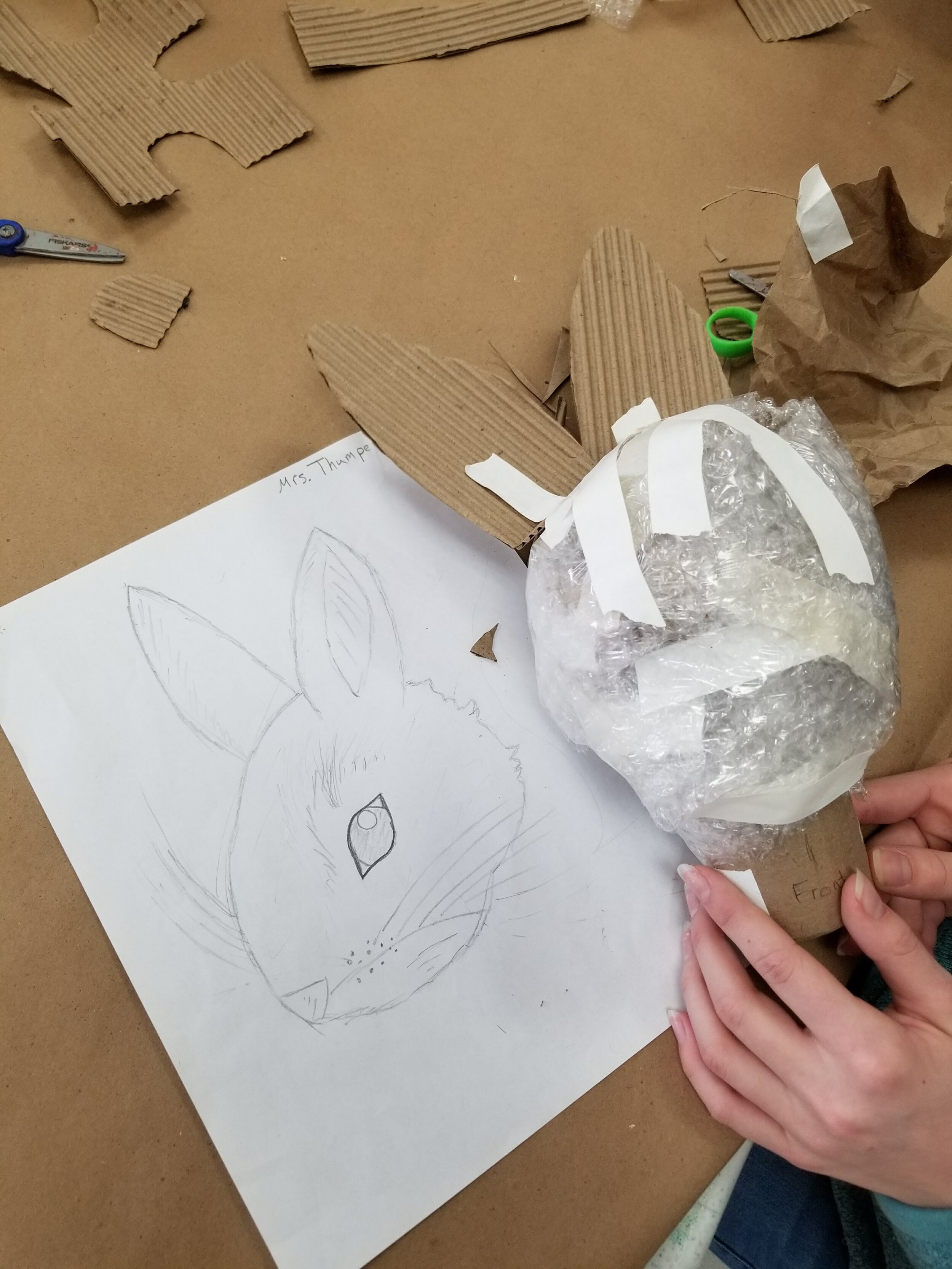
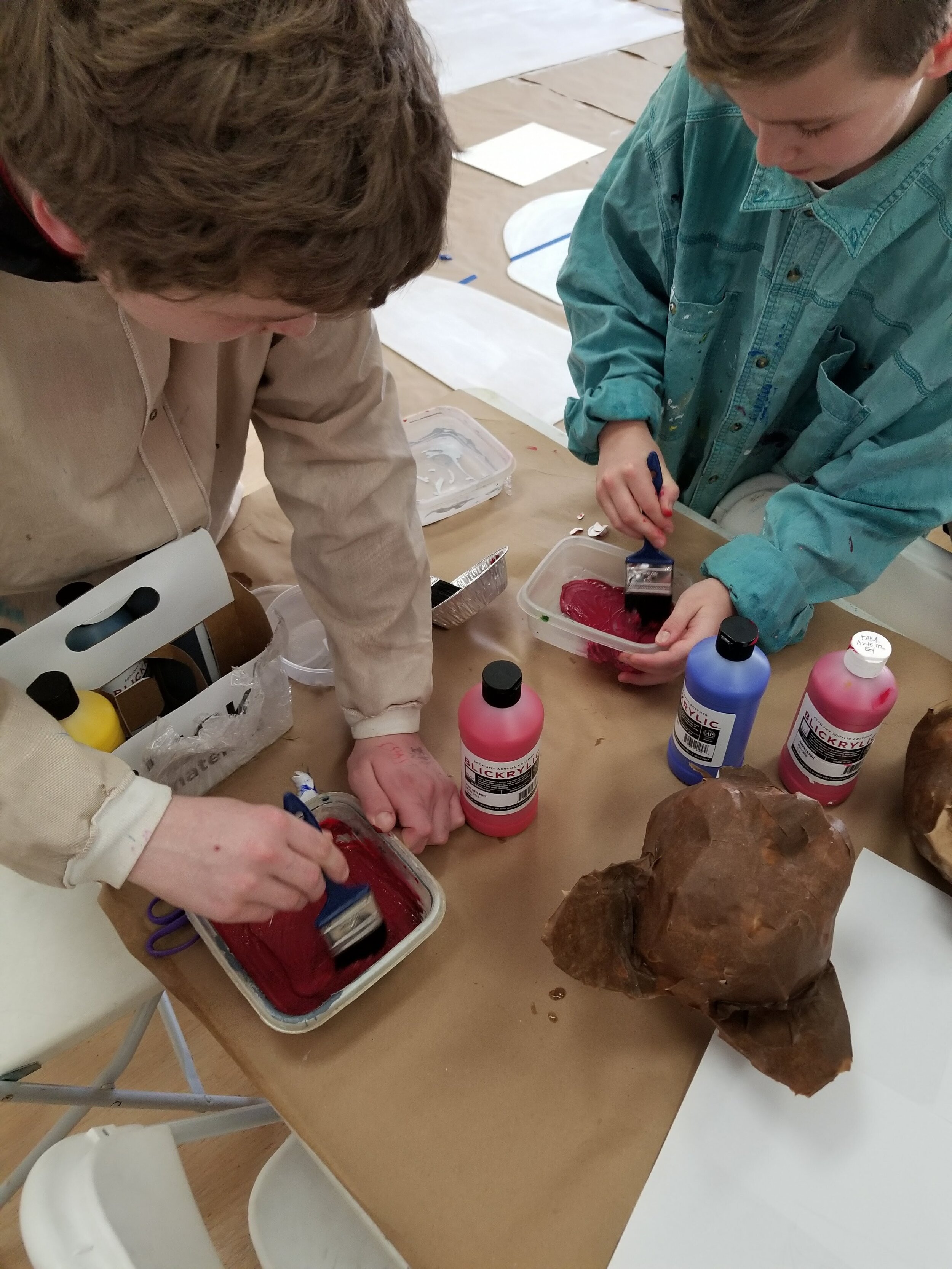
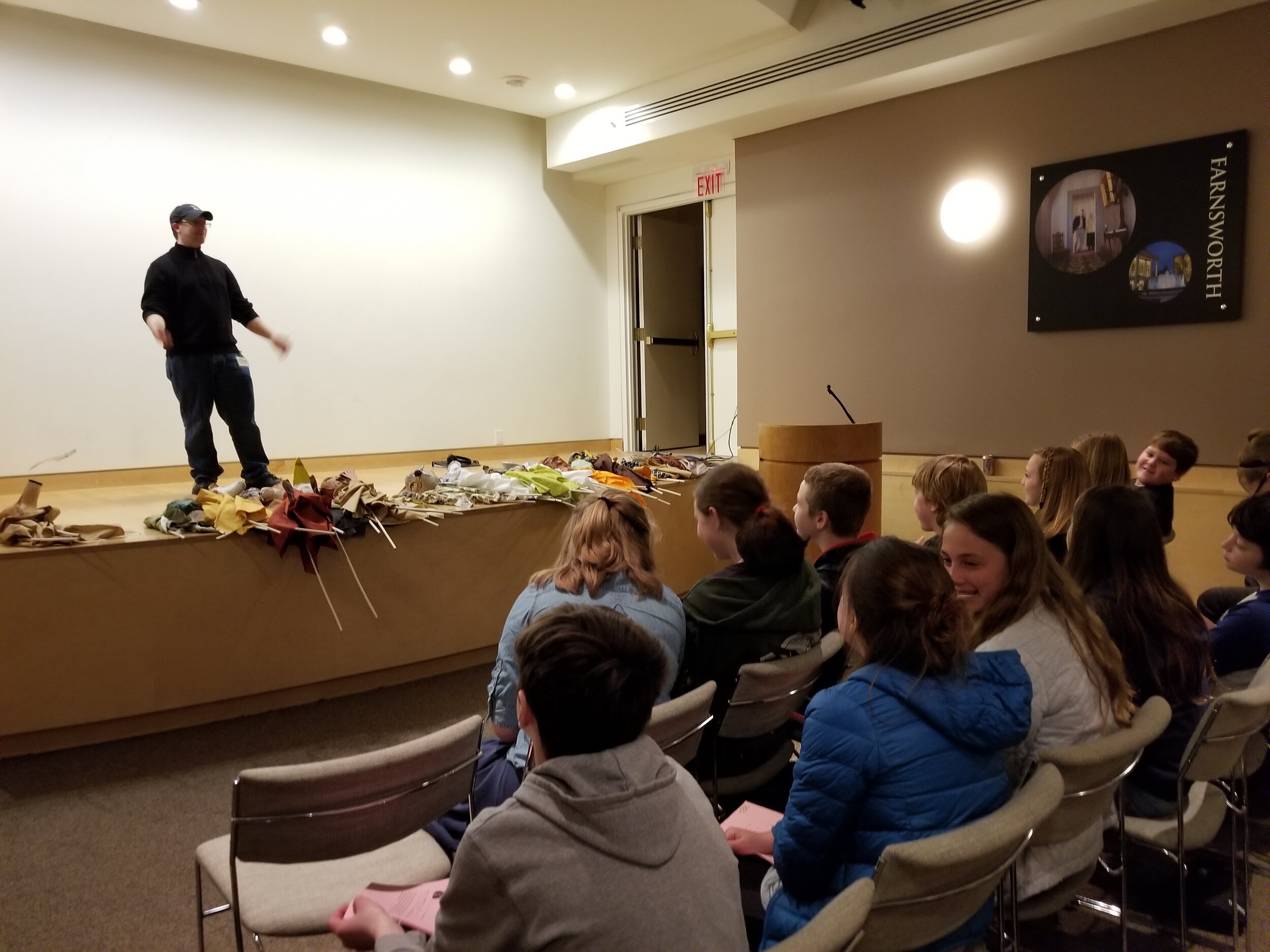
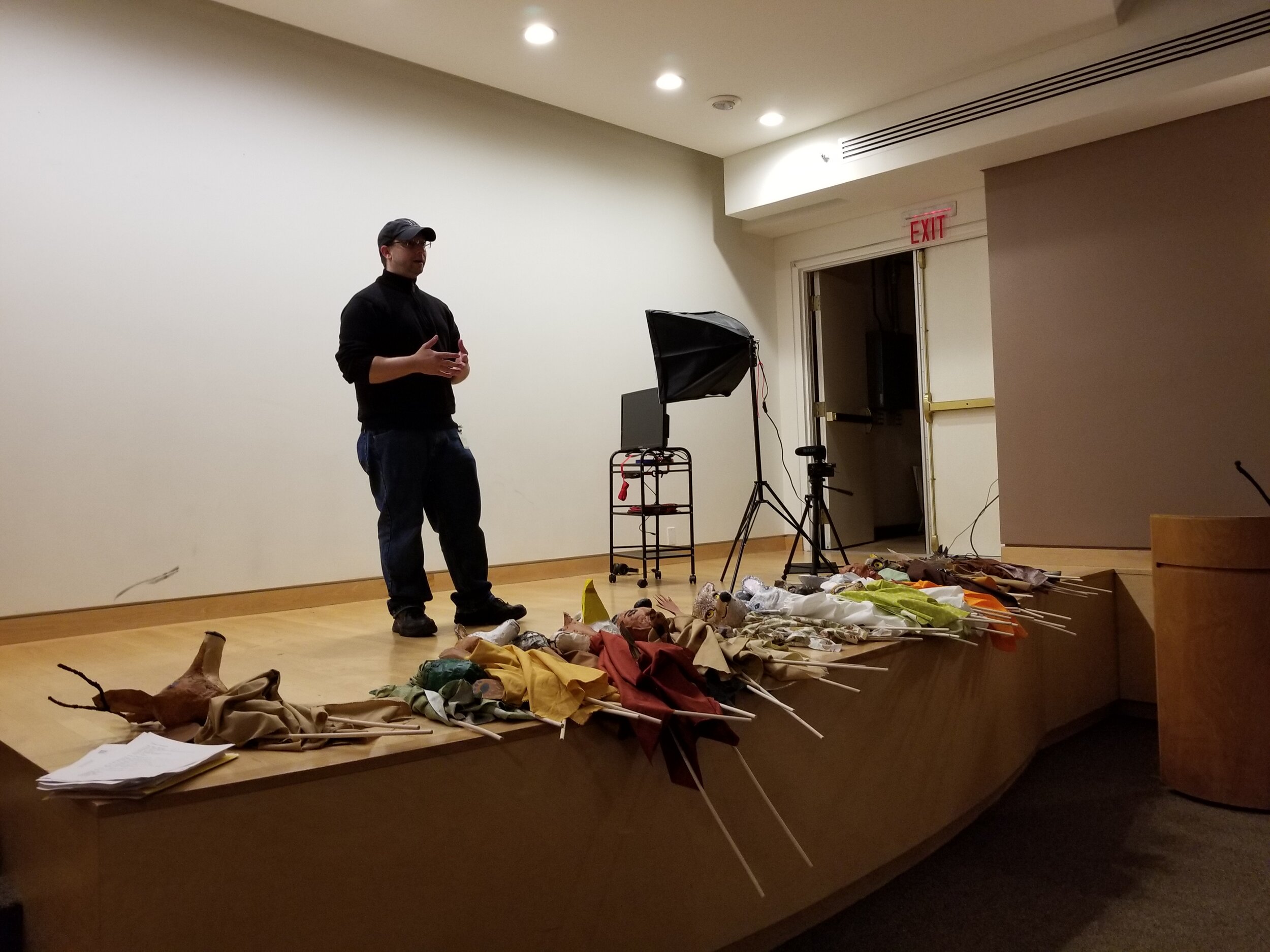
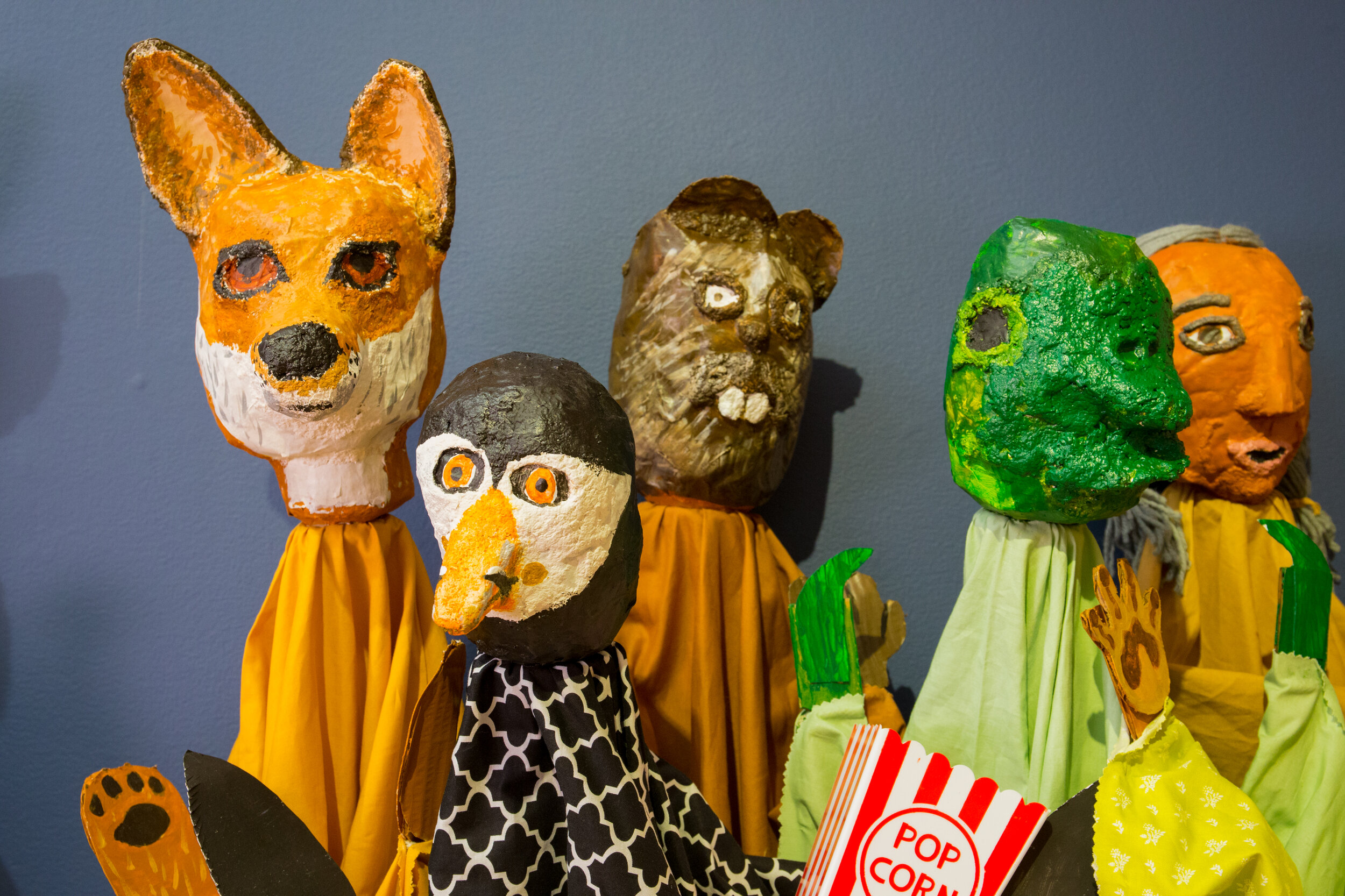

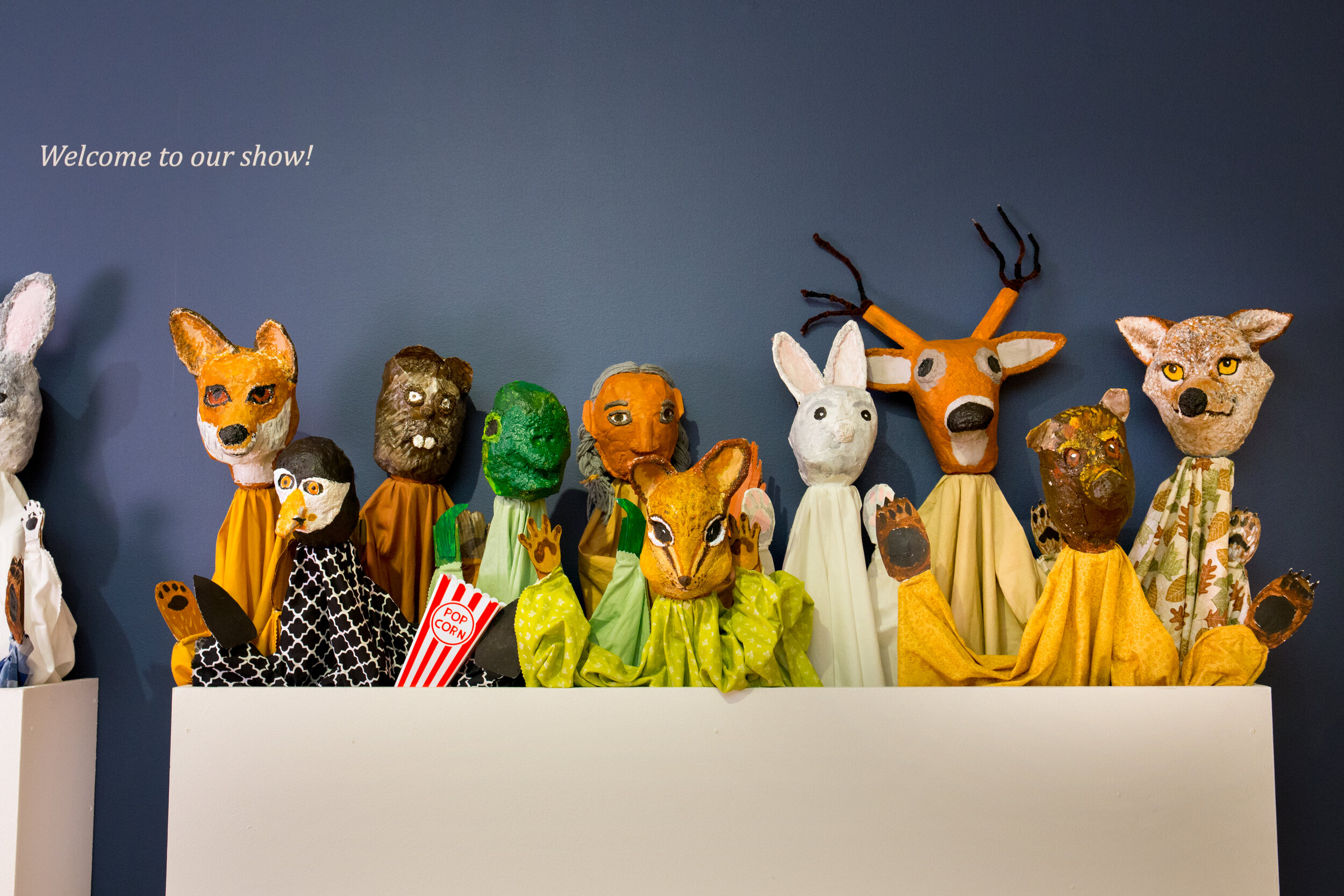

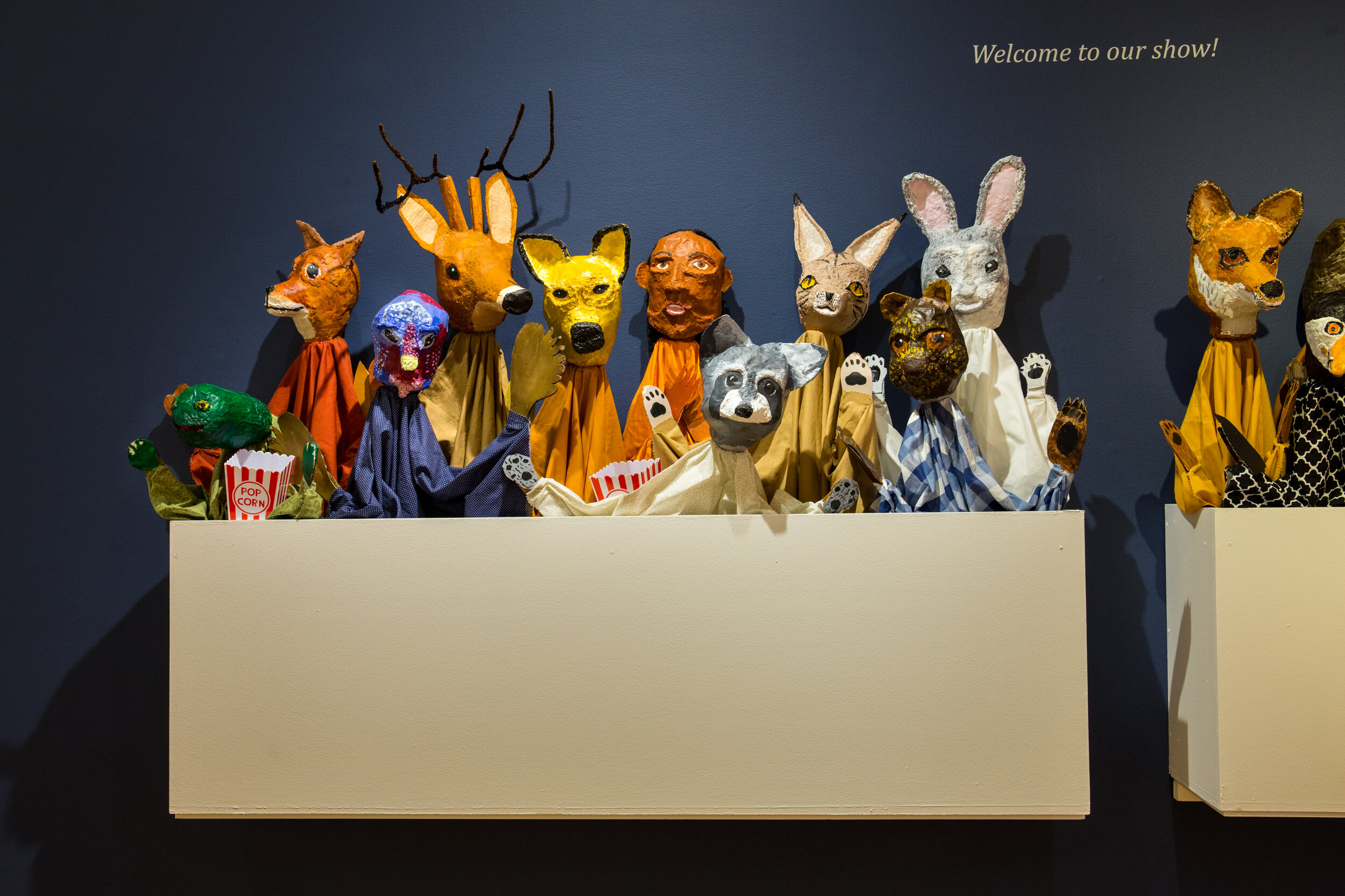
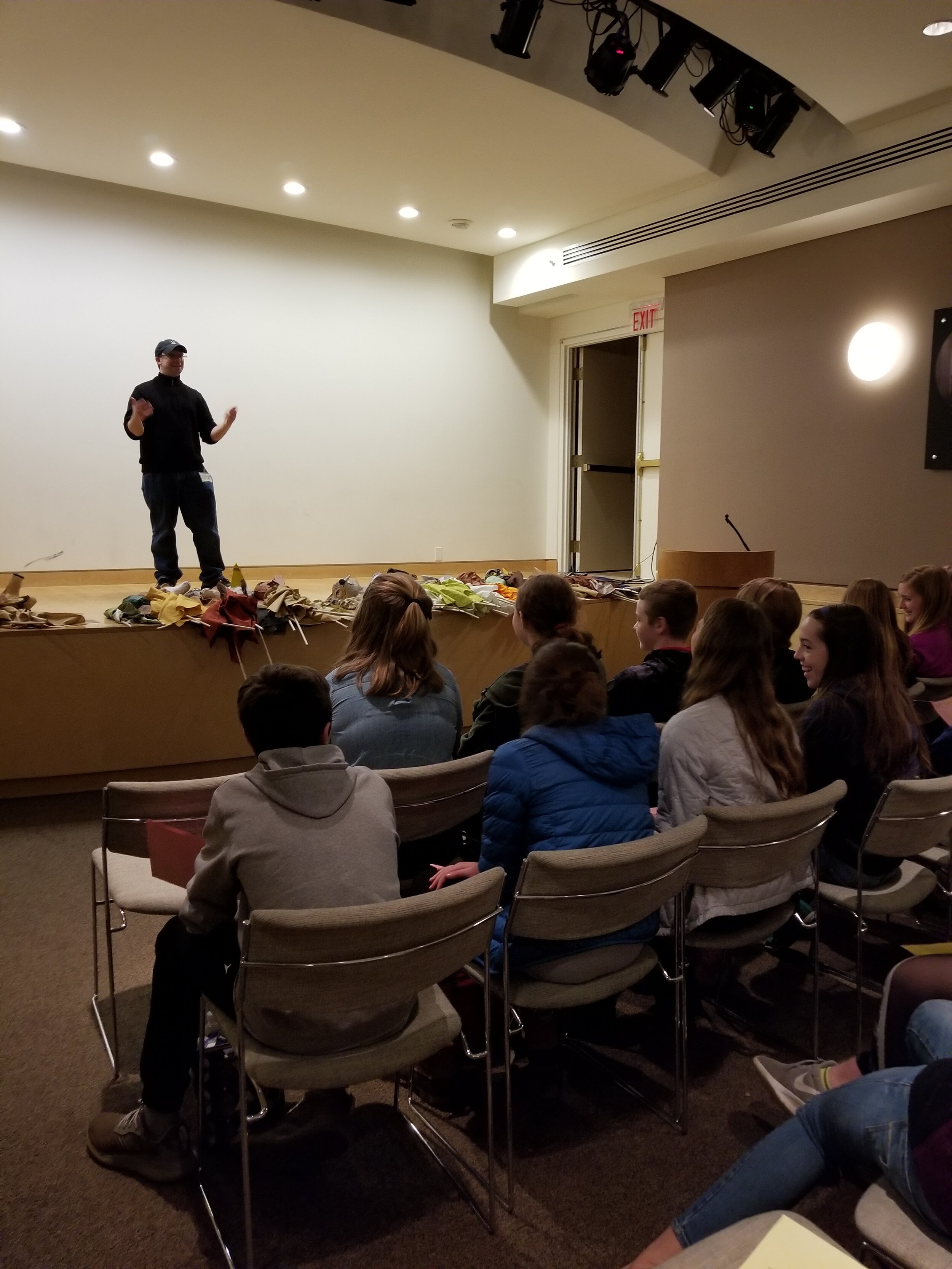
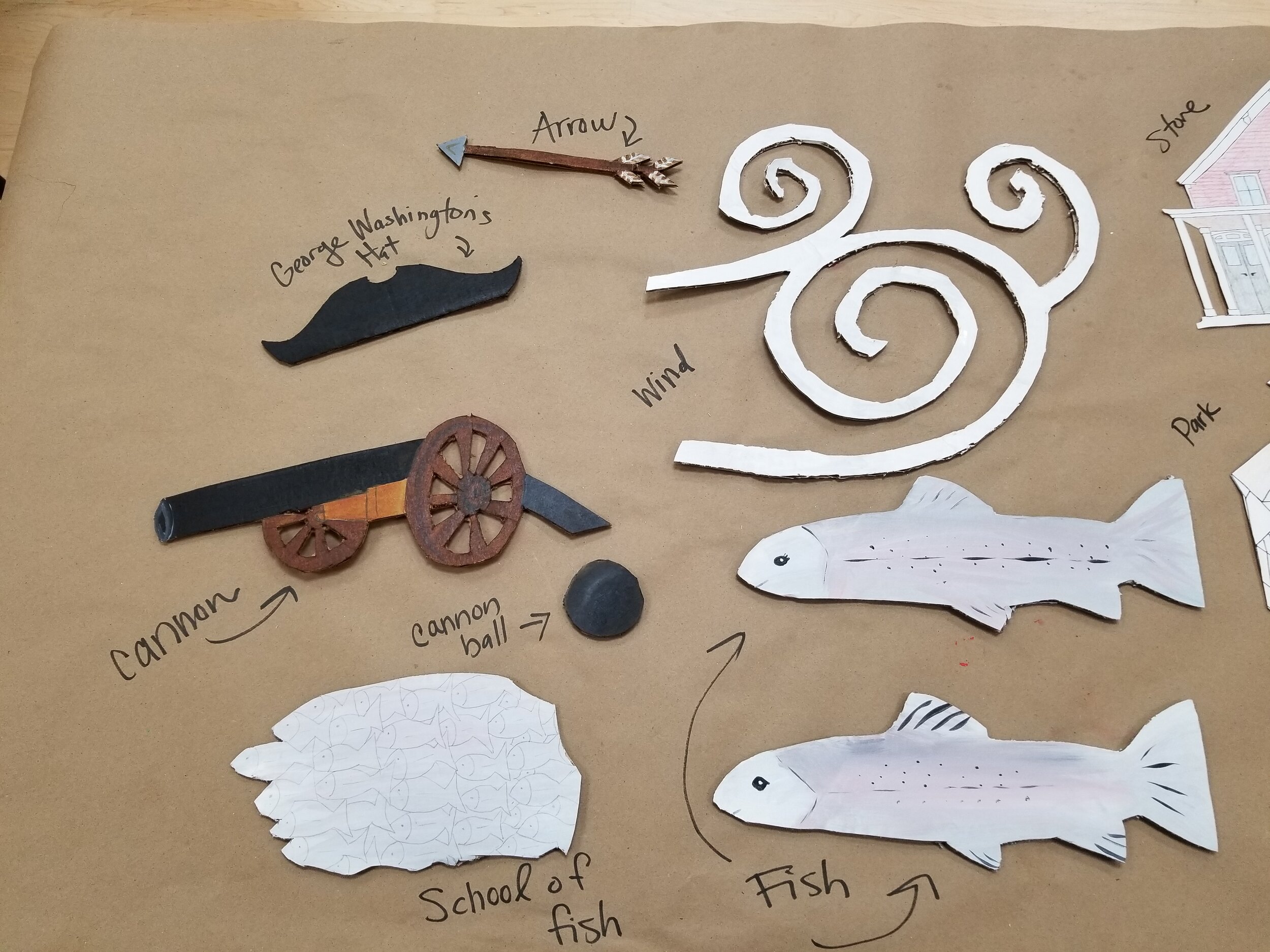
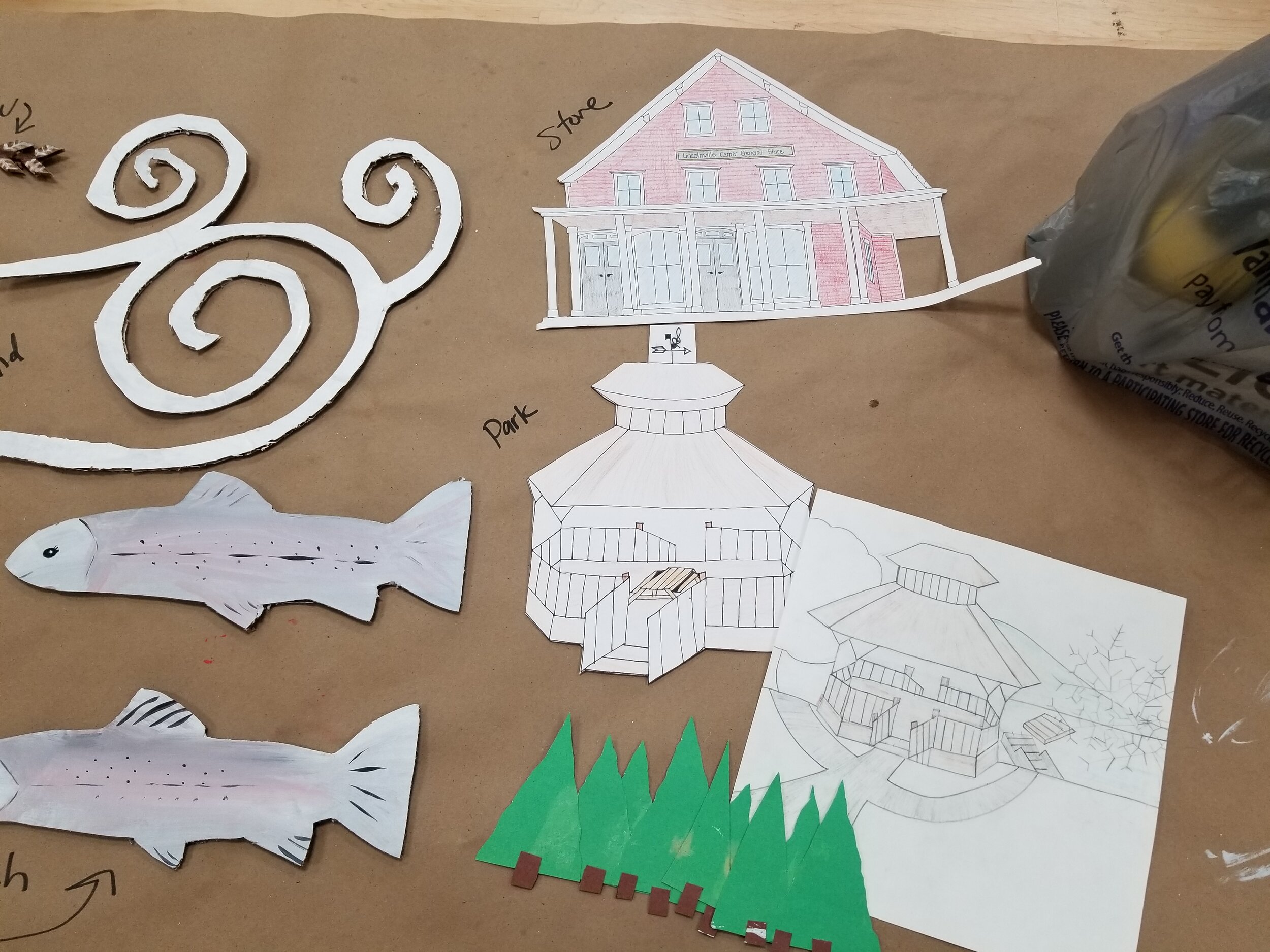
Activity: Notice
Notice a work of art. What story does it tell? What can we learn about the place or setting of the composition? What might it tell about the people who live there? How might one feel in that place? How does lighting, color, and shape impact our experience?
Follow along with museum educator Andrea Curtis as she notices this work of art by Marguerite Zorach. How does this work of art share a particular story of the land and its people? Notice who is included in this story, and who is excluded. Why might this be the case? What (or whose) other stories might we want to uplift?
Stories of the Land and Its People
The Stories of the Land and Its People program encourages student participants to learn about people and places in their community. For more student project examples, visit our Student Exhibitions page.
Developed by:
Andrea L. Curtis, Education Program Manager
Farnsworth Art Museum
Robbie Lewis, Classroom Educator
Farnsworth Stories Program
Susan Beebe, Teaching Artist
Farnsworth Art Museum
Matt Curtis, Teaching Artist
Farnsworth Art Museum
Contributors:
Claire Horne, Arts in Education Project Assistant
Farnsworth Art Museum
Robbie Lewis, Art Educator
Farnsworth Stories Program
Developed by Andrea L. Curtis, Farnsworth Art Museum, Arts in Education Program, 2021





















